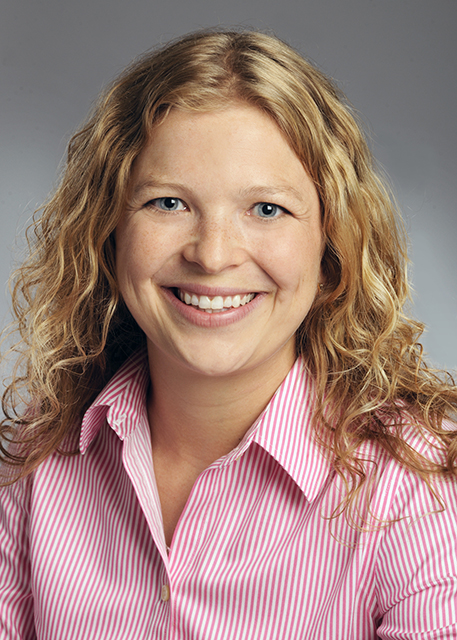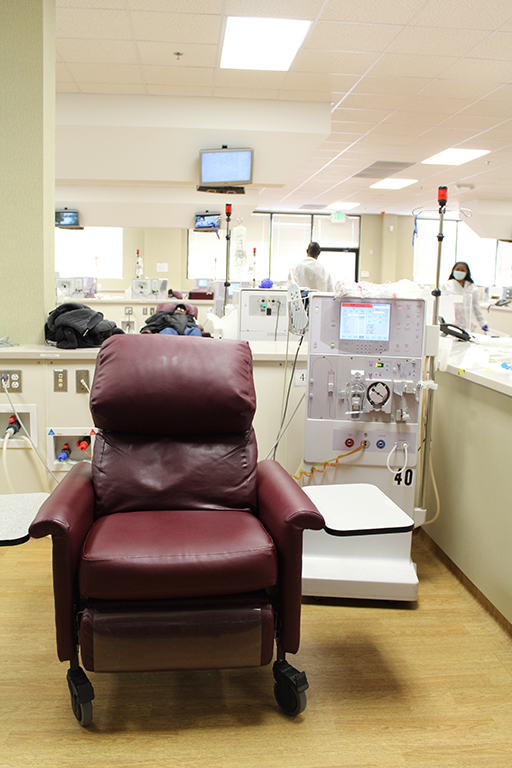Teaming Up to Improve Access to Kidney Transplants for Dialysis Patients
Patients with kidney failure have two options to stay alive: a kidney transplant or lifelong dialysis. With dialysis, people spend hours hooked up to a machine that cleans their blood, which needs to be done several times a week. Most people do much better and live longer if they get a transplant—and it’s more cost-effective.
But a patient’s likelihood of getting a transplant depends on where they live and other factors. The southeastern United States has the lowest rate of transplantation in the country, meaning more patients stay on dialysis. And although African Americans are overall less likely than White patients to get a kidney transplant, these racial disparities are even worse in the Southeast.

Researchers at Emory University in Atlanta teamed up with dialysis facilities, transplant centers, and patient advocacy organizations to address these problems. Supported by NIMHD, the regional coalition found a way to reduce racial disparities at an important step in the transplant process: referral for transplant evaluation. 1
To be considered for a transplant, a patient’s doctor or dialysis facility needs to refer them to a transplant center, which then evaluates the patient to see whether they medically qualify to be put on the organ wait list.
Not much was known about the referral stage until the coalition looked into it. The researchers found wide variation in how often dialysis facilities in Georgia referred patients for transplant evaluation: Some referred three out of four patients, while others referred none.2 The coalition talked to patients and staff at facilities with low referral rates to find out why patients were not being referred and evaluated at transplant centers.
Some clinicians and staff said they did not know enough about the transplant process to educate patients. They also said many patients were not interested in learning about transplantation. In talking with patients, however, the coalition found that most patients were interested but were confused about the whole transplantation process. Many patients were concerned about the cost of a transplant or did not know how to get to the transplant centers, which tend to be in larger cities, for multiple appointments. These barriers could make patients less likely to ask for a referral or to show up for the evaluation appointment.
The coalition members pooled their expertise and resources to develop a set of strategies that targeted barriers at the dialysis facility policy, leadership and staff, and patient levels.

“There is not just one reason for the low transplant rates in our region,” says Dr. Rachel Patzer, Ph.D., M.P.H., associate professor at Emory University and director of its transplant health services and outcomes program. “So there is not one intervention, one researcher, or one health system that can solve this issue. It requires us to work together.”
The coalition chose 134 dialysis facilities in Georgia with the lowest referral rates or most significant disparities in who got referrals, randomly assigning half of these facilities to receive the set of interventions over the next year.
The interventions included monthly webinars for dialysis facility leadership and staff to address barriers such as how to determine which patients to refer for a transplant. To address patients’ confusion about the process, the coalition paired dialysis patients with mentors who had received a kidney transplant. Since the mentors had been through the process, they could walk patients through the steps much better than dialysis facility staff could.
To address racial and income disparities in transplantation more specifically, the coalition encouraged patients at facilities receiving the intervention to attend a movie night showing an educational video on transplantation. A coalition member used her years of experience in the community to tailor the video to African American patients. Social workers in the coalition addressed the more practical barriers lower-income patients faced, such as transportation to the transplant center.
Dialysis facilities that received the intervention increased their referral rates 75 percent, compared to a slight decrease in referrals from the control group of facilities. The interventions benefited African American patients the most, increasing the percentage of African American patients the facilities referred from 10 percent to 16 percent in just one year. In contrast, the facilities that did not receive the interventions slightly decreased the percentage of African American patients they referred. These results were recently published in the Journal of the American Society of Nephrology.
It will take a couple more years to see whether the interventions lead to more people from these facilities getting organ transplants. But the initial results are promising.
“What is really inspiring is that transplant centers tend to compete with each other, but in our coalition everyone works together because we want to lift up the entire population,” Dr. Patzer says. “The continued collaboration in the coalition has been great and has even grown to include the major dialysis providers. It’s been really good to have their partnership.”
With additional support from NIMHD, the coalition expanded the intervention to other areas in Georgia, as well as to North and South Carolina.
Ultimately, Dr. Patzer hopes others around the country will take the coalition’s lead and work together to collect data on the earlier stages of the transplant process. After all, regional differences, like those she found in Georgia, are probably not limited to the Southeast.
“But without having data, the researchers, transplant centers, and dialysis facilities don’t know it’s a problem,” Dr. Patzer says. “It is important to figure out why there are differences in access to transplantation. Then we can come up with strategies to improve it nationally.”
References
- Patzer, R. E., Paul, S., Plantinga, L., Gander, J., Sauls, L., Krisher, J., … Pastan, S. O. (2017). A randomized trial to reduce disparities in referral for transplant evaluation. Journal of the American Society of Nephrology, 28(3), 935–942. doi: 10.1681/ASN.2016030320.
- Patzer, R. E., Plantinga, L. C., Paul, S., Gander, J., Krisher, J., Sauls, L., … Pastan, S. O. (2015). Variation in dialysis facility referral for kidney transplantation among patients with end-stage renal disease in Georgia. Journal of the American Medical Association, 314(6), 582–594. doi: 10.1001/jama.2015.8897.
Posted October 16, 2017

















